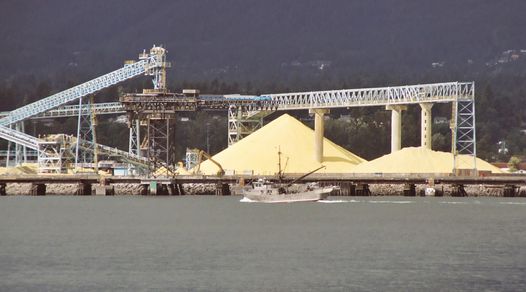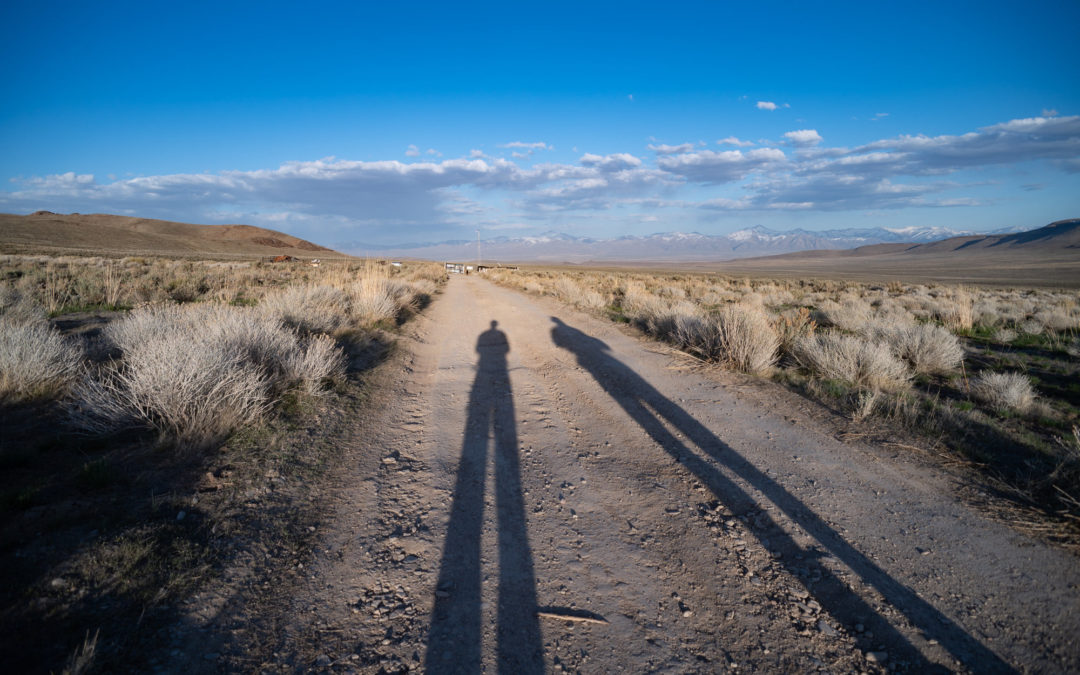It’s often said that solar panels, wind turbines, and the lithium-ion batteries that store their energy and power electric vehicles will save the planet.
What most people don’t know is that producing lithium has direct links to the Alberta Tar Sands (also known as the Athabasca tar sands), the largest and most destructive industrial project on the planet.
This is a personal issue for me. I have fought the tar sands for over a decade. Starting in 2010, I began campaigning for the city of Bellingham, Washington to forbid a spur of the Trans Mountain pipeline which carries “dilbit” (diluted bitumen, AKA unrefined tar sands to which gas has been added so it’ll flow easily through a pipeline) under the city.
After months of campaigning, Bellingham became the first city in the nation to unanimously pass a resolution declaring tar sands fuel to be harmful. But despite overwhelming public opposition, the city’s attorneys said they couldn’t prevent the pipeline from operating using the law. What that says about the state of democracy is worth a whole different article. And perhaps a revolution. But I digress.
After my years in Bellingham, I lived in Salt Lake City, where I took part in the campaign to protect the Tavaputs Plateau in northeastern Utah from tar sands strip mining. As part of that work, I took part in public meetings, family camp-outs on the site, disruptive protests, and several direct actions against the U.S. Oil Sands Corporation.
For the last three months, I’ve been in Nevada, on Northern Paiute territory, holding down a protest camp established on the proposed site of an open-pit lithium mine. I’m an equal opportunity land defender. I think it’s wrong to blow up a mountain for tar sands. I think it’s wrong to blow up a mountain for lithium, too. I guess I’m just stubborn like that.
But as I’ve implied, these projects are directly related. It turns out, the proposed mine at Thacker Pass would likely rely directly on materials sourced from the Alberta tar sands as the key chemical ingredient in their production process.
According to the Final Environmental Impact Statement, the proposed Thacker Pass mine would produce 5,800 tons of sulfuric acid per day for use in refining lithium. That would require importing 1,896 tons of sulfur per day. That’s nearly 700,000 tons per year, roughly equivalent to the mass of two Empire State Buildings annually. This would be brought in to Thacker Pass on dozens of (diesel-fueled) semi-trucks each carrying 3,800 gallons of molten sulfur.
Most sulfur comes from oil and gas refineries, where it’s a byproduct of producing low-sulfur fuels to meet air-quality regulations. And here’s the punchline: according the U.S. Geological Survey, tar sands contain 11 times as much sulfur as conventional heavy crude oil. There are literal “mountains” of sulfur piling up in Alberta, and at other refineries which process tar sands fuel.
That includes the refineries in Anacortes, Washington, which refines the “dilbit” from the pipelines running underneath Bellingham, my old home. These two refineries are major sources of sulfur for the entire western United States, shipping out millions of tons annually.
According to Lithium Americas Corp. Vice President of Global Engineering, the proposed lithium mine at Thacker Pass would purchase sulfur on the bulk commodity market, and it would be delivered by rail to Winnemucca (60 miles south), then brought by truck to Thacker Pass. That bulk commodity market sources nearly 100% of its elemental sulfur from oil and gas refineries.
And so we come full circle: the lithium destined for lithium-ion batteries that will be extracted from Thacker Pass, will almost certainly be directly connected to the total destruction of Alberta’s boreal forest, the poisoning of the water across thousands of square miles, the epidemic of cancers and rare diseases in that region, the wave of missing and murdered indigenous women in Alberta, and all the other harms that come from the tar sands. And, lest we forget, the tar sands are a major contributor to global warming. Canadian greenhouse gas emissions have skyrocketed over recent decades, as tar sands oil production has expanded.
Revenue from sales of sulfur is not unimportant to the economics of tar sands oil extraction. One report from 2018 found that as much as half a million barrels per day of tar sands product would be economical to extract if legal levels of sulfur allowed in bunker fuel were lowered. Another report found that “developing a plan for storing, selling or disposing of the sulphur will help to ensure the profitability of oil sands operations.”
All this points to a relatively simple conclusion: extraction of lithium at Thacker Pass would directly support the economics of extracting additional sulfur-rich crude oil and bitumen at the tar sands, further incentivizing the destruction of the planet.
Why do we defend the land here at Thacker Pass? There are so many reasons. It is important habitat. It is sacred ancestral land for our Northern Paiute friends from the nearby Fort McDermitt tribe. It is beautiful. But we also stand to protect this place because we stand for the truth. Lithium mining, and by extension, much of the so-called “green economy” that is being developed is not separate from fossil fuels. It is firmly dependent on fossil fuels.
Besides the sulfur, this project would burn tens of thousands of gallons of diesel fuel per day — operating heavy equipment made of steel that was produced with metallurgical coke, a type of coal. That same steel makes up the frame of the electric cars, too. The roads into the mine site would likely be made of asphalt concrete. You know what another name for asphalt is? Bitumen. AKA tar sands.
The idea of a “green” electric car is a fantasy. The sooner we face that reality, the sooner we can put a stop to false greenwashing projects like the Lithium Americas/Lithium Nevada Thacker Pass mine. The sooner we face reality, the sooner we can recognize that to shut down the tar sands, we actually have to shut down the tar sands, not just blow up other mountains elsewhere and hope that leads to the end of the tar sands.
Do not fool yourself. This is not some great green transition. It is more of the same. More destroyed land, more poisoned water, more decimated wildlife.
It’s beautiful here at Thacker Pass. Yesterday morning, I woke before 5am to visit the Greater sage-grouse “lek” — mating ground — on top of the mountain directly above the proposed mine. I watched the male grouse strut and dance, and thought about the new USGS report showing that grouse populations have declined by 80% since 1965, and nearly 40% since 2002. That comes on top of previous population collapses. The population was 16 million a century ago. Now, it’s closer to 200,000. That’s a 99% decline. This region, the northwestern Great Basin, has been particularly hard hit.
It is possible for humans to live sustainably. Our ancestors managed it for hundreds of thousands of years. Is it possible to live sustainably, and drive cars? No, I don’t believe it is. You may not like it, but there’s a thing about the natural laws of the universe: they don’t give a damn if you like them or not. Gravity exists. Ecological constraints exist. If you ignore them, you will pay the price.
We cannot afford to ignore the truth, and because of this, we must stop the Thacker Pass mine — and the tar sands. We need your help. If you can contribute to this campaign, or to the broader transformation of society that is needed, reach out to us at https://ProtectThackerPass.org. Construction might begin very soon. If that happens, Thacker Pass will die. The water will be poisoned. And the truth will be crushed along with the sagebrush, under the hard metal treads of the bulldozers. Stand with us.
#ProtectThackerPass #BrightGreenLies #TarSands #Greenwashing #Lithium #EVs #EnergyStorage #KeepItInTheGround

Photo: Large sulfur pile — byproduct of tar sands oil refining. By Leonard G., Creative Commons ShareAlike 1.0.


Trackbacks/Pingbacks